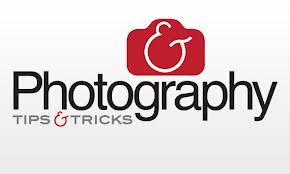Digital photography tips will help you become a better photographer. Creating a routine will help you make fewer mistakes and be ready to take pictures any time Digital Photography School .
As a professional photographer, I am often asked to advise on the advice of digital photography. A good tip is to create a routine.
Almost every great photographer has one, and you should, too. World-class athletes use visualization to achieve higher records and do my best every time I compete. The same goes for just about anything, including photography.
Here's my routine:
Make sure you have fresh batteries and replacement units, too!
No batteries means no camera. This results in no picture! This is bad! Especially when you have the opportunity to photograph Big Foot or Elvis or that prevent foreign land on the north forty.
Always have a clean card.
The camera can use a compact flash, SD card or USB key, whatever the format card, make sure you have enough space to take and store your new photos. And still have a spare just in case. Elvis is waiting ...
Check the ISO settings.
This is how you tell the camera what kind of light you are shooting bright or dark inches, outside or inside. Try 100-400 800-1600 indoor and outdoor.
Pull automatic.
For more of his adventures as a beginner photographer, automatically will be fine. The cameras are so sophisticated, we let them do the hard work for us. As you progress, you can venture into the world of manual and aperture priority and shutter priority, but that's another article.
Border Patrol.
Whatever you call it, you need to look at the edges of the Live View or in the viewfinder to see if there are distractions that could distract the subject. For example, have you ever taken a picture of something or someone just to watch it later and say, "I have not seen," Yes, we are all guilty of tunnel vision so our images. Aunt Sally does not include a plant or tree that seems to be sprouting from the back of his head! Learning to look around the edges and will train you to stop having tunnel vision and really look at your picture.
To do so, routine, or a variation of it every time you take your camera and you will make fewer errors and the camera always has the power, have room to write pictures and you will realize what is in the viewfinder / LCD. To do this, the tip of Digital Photography School and you begin to see and think like a professional.
As a professional photographer, I am often asked to advise on the advice of digital photography. A good tip is to create a routine.
Almost every great photographer has one, and you should, too. World-class athletes use visualization to achieve higher records and do my best every time I compete. The same goes for just about anything, including photography.
Here's my routine:
Make sure you have fresh batteries and replacement units, too!
No batteries means no camera. This results in no picture! This is bad! Especially when you have the opportunity to photograph Big Foot or Elvis or that prevent foreign land on the north forty.
Always have a clean card.
The camera can use a compact flash, SD card or USB key, whatever the format card, make sure you have enough space to take and store your new photos. And still have a spare just in case. Elvis is waiting ...
Check the ISO settings.
This is how you tell the camera what kind of light you are shooting bright or dark inches, outside or inside. Try 100-400 800-1600 indoor and outdoor.
Pull automatic.
For more of his adventures as a beginner photographer, automatically will be fine. The cameras are so sophisticated, we let them do the hard work for us. As you progress, you can venture into the world of manual and aperture priority and shutter priority, but that's another article.
Border Patrol.
Whatever you call it, you need to look at the edges of the Live View or in the viewfinder to see if there are distractions that could distract the subject. For example, have you ever taken a picture of something or someone just to watch it later and say, "I have not seen," Yes, we are all guilty of tunnel vision so our images. Aunt Sally does not include a plant or tree that seems to be sprouting from the back of his head! Learning to look around the edges and will train you to stop having tunnel vision and really look at your picture.
To do so, routine, or a variation of it every time you take your camera and you will make fewer errors and the camera always has the power, have room to write pictures and you will realize what is in the viewfinder / LCD. To do this, the tip of Digital Photography School and you begin to see and think like a professional.


